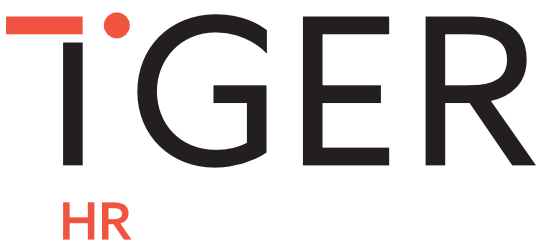Table Of Contents
Introduction
Tiger Recruitment hosted a roundtable event, bringing together a select group of HR leaders across a range of industries. The discussion focused on their experiences of employee retention and acquisition.
There are plenty of reasons why staff leave their jobs — from low salary, poor management and lack of flexible working through to a long commute. According to Forbes, however, the most common reason an employee leaves is because of a toxic company culture, which ranks number one for 62% of jobseekers. With this in mind, the ever-evolving challenges that HR leaders face are far from simple.
Throw in the cost-of-living crisis, and employers now face even more pressure to improve working conditions for their employees. With junior jobseekers and graduates receiving lower salaries, compared to the average UK business support salary at £40,656, graduate retention and attraction came up time and time again as a key concern among our HR leaders. Is it possible to attract entry-level staff without the same attractive salary that might be offered to those with more experience?
In 2022, workplace trends, like the Great Resignation and quiet quitting, exploded, prompting many to reconsider their retention strategies. From boosting salaries to protecting employee wellbeing, read on to discover what our HR Leaders will be investing in over the next 12 months.
Money Talks
Our latest Salary and Benefits Review revealed that 51% of UK office workers received a pay rise in the last 12 months — almost twice as many as in 2021 (28%). While that might not present too much of a shock, given the current cost-of-living challenges the UK is facing, what may surprise employers is that many employees are prepared to receive less money overall (inclusive of salary, benefits, bonuses), in return for an increased base level of pay.
As bonuses are usually positioned as a job performance incentive, some employees aren’t confident that their performance will be accurately evaluated. Those in roles without commission also have less faith in the bonus system, as the value that they bring to a role has more vague indicators of performance. According to Employer News, 83% of HR professionals believe that compensation should be linked to performance. With this in mind, it’s no surprise that new employees who are yet to ‘prove themselves’ have concerns about the effectiveness of bonuses.
Some employers are experiencing an increase in requests for salary raises from junior candidates, due to a generational trend of open discussion about salary ranges. With 64% of UK-based employees wanting greater transparency from their employers about pay practices, and over half of employees across the US wanting to know what everyone at their organisation is paid, it’s clear that the push for more open communication is strengthening.
What employers are finding difficult, however, is not the request for transparency, but the lack of variable allowance across different industries, roles, type of pay, and experience. If these factors are omitted, the reality of an individual’s desired pay may fall short of their expectations.
At our roundtable, employers spoke openly about graduate salaries, with most — in light of the cost of living — agreeing there is a growing pressure to increase them. Many have altered their graduate bonus and salary structure, to accommodate for higher salaries with lower bonuses.
Employers mentioned that they were getting to the stage where the grads that they hired five years ago were starting to think about buying a home. But with the cost to buy being so expensive, these employees were looking to move further out. One employer expressed how disruptive this was for the business, and that they were planning financial support options for employees looking to buy their first home, to retain talent effectively.
Key actions
- Consider offering financial support to long-term employees looking to buy their first home. This will help to retain staff who are debating whether to relocate.
- If the budget doesn’t allow for an increase in the overall employment package, increase the base pay and reduce the bonus.
- Only consider pay transparency or banding if you can accommodate variations across experience, sector and role type.
Development and Training
Career development remains a leading factor in employee retention. In our Salary and Benefits review, over 40% of jobseekers reported that career development was a priority in their next job. Around the table, HR leaders made it clear that their retention efforts were focused on strong employee development structures, regardless of role or industry.
Some shared how they had realigned their career development framework to prioritise visibility in their structure. In doing this, they found employee feedback overwhelmingly positive as a result of all staff being able to map out a clear path of personal progression.
Some HR leaders said that they were trying to improve the level of training offered to roles that traditionally lacked in this area. For example, one company was in the process of launching a new training programme with the Institute of Executive Assistants and Administrators. This employer also planned to implement a top-to-bottom training plan, allowing for a diverse group of employees with varying experience to capitalise on peer-to-peer knowledge sharing, thereby encouraging transparency at the same time.
Training, as part of graduate apprenticeships, is a key focus for 2023. Many are evaluating these, with the majority seeing apprentices working weekends and unusual working hours, due to off-the-job training requirements. Following a full day of learning and working, many employers received negative feedback from their grads a contributing factor to feeling burnt out.
The training and development piece for grads is a key focus for employers, with most leaders at the roundtable saying that they find graduate employees the hardest to retain. In the Wiley Edge 2021 report on graduate retention, 16% of employers surveyed found that a staggering 51% – 100% of their graduate employees typically leave the business within 24 months. A further 38% found that between 21% and 50% leave within two years. With this in mind, HR leaders at the roundtable were either thinking of scrapping apprenticeships completely or had done so already.
Demonstrating to your staff that yours is a business where they can develop a career will play a huge role in their decision to stay or go. The more your company gives people the opportunity to improve themselves, the more likely it is they will stay to find out how. By nature, we don’t want to stagnate. This is self-perpetuating because as our career furthers, the more important our decision-making inevitably becomes – which in turn heightens our emotional investment in the business.
Key actions
Retention efforts should be focused on strong employee development structures, regardless of role or industry
Prioritise visibility in the career development framework, so staff can take greater ownership of their personal progression within the business
Extra hours and “tick-box” exercises enforced in certain graduate apprenticeships are proving to have a negative impact on graduate retention. Companies should consider assessing these schemes, by requesting feedback from their graduates
Equity, diversity and inclusion
Diverse workplaces make better decisions 87% of the time. Research has also shown that diverse staff are more innovative, creative, and faster problem-solvers.
The push for a more diverse workplace is still front of mind for many employers. HR leaders at our event declared that their diversity and inclusion had improved across the board, and that they are still reporting rising numbers in their data.
Several employers have made significant progress as a result of establishing ED&I committees, with one claiming they were inundated with applications for the committee elections. Another stated that increased maternity and paternity payments have been a great success in regard to a more inclusive work environment. With new strategies in place, employers also have more accessible data on ED&I, which has been pivotal in their plans to make further changes.
One leader said that by requesting ongoing feedback on their ED&I initiatives, they are able to ensure that new strategies are well received, and gain greater insight into the thoughts of a wide range of employees.
Although progress is being made, equity, diversity and inclusion remain an area that still needs sustained and continued attention. The majority of employers agree that moving forward, actively hiring a more diverse workforce is essential in striving for equality.
It’s still as important as ever for employers to be part of the change, and at Tiger we will continue to champion the efforts made for progress. If you are looking to improve your ED&I, here are a few tips on how to do so.
Education
- Education can be in the form of training, discussions, and open communication. A good place to start is by creating an ED&I guide for staff.
- Learn from previous mistakes; educate yourself and your employees on what can be improved.
- Lead by example as an employer; pass on the importance and benefits of inclusion in the workplace.
Reach wider audiences
- When writing job openings, descriptions should be catered to reach broader audiences. These jobs should also be sent to a wider net of platforms and outreach programs.
- Advertise your company values on ED&I. Most companies forget to celebrate their workplace culture in their job listings, website, and media channels, but this should be a very visible part of your employer brand.
Communication
- Inclusive language is very important and a powerful tool for managers to open up internal communication.
- To make sure you are using inclusive language, avoid biases, slang, and expressions that discriminate against groups of people.
- By asking your diverse workforce for feedback you will ensure transparency as well as ownership of your actions.
Offer meaningful opportunities
- Take an individualistic approach to career development by nurturing talent and asking people what they want. Offer equal opportunities and be inclusive of all diversity groups.
- Set measurable goals, whether it be through quotas or feedback. Use this data to help direct progress in the right areas.
Foster at all levels
- From management level down to graduates, diversity should be a consideration when hiring for any position.
- Whether via blind CV, skills testing or widening your candidate pool, make a commitment to remove biases from the recruitment process.
Offer better workplace flexibility and policies
- Allow employees to take time off for religious holidays that may not be officially observed by the company.
- Be flexible with RTW parents and offer competitive parental leave.
- Ensure your office is well-equipped with inclusive facilities, including wheelchair access and non-gendered bathrooms.
- Offer the option for flexible working hours.
KEY ACTIONS
- Actively align the recruitment process into DE&I initiatives, involving key stakeholders and training managers where needed.
- Review existing policies to make sure they’re inclusive. Installing an ED&I committee in the workplace can support internal change.
- Even with improved ED&I data in 2023, more still needs to be done, as equality figures remain unbalanced across the board. Hold those in management accountable to change.
Flexible working
In the second half of this year, we saw a wave of employers insisting on workers returning to the office full time and, as a response, many employees started to look elsewhere. While most people enjoyed the flexibility of WFH and found greater productivity, some employers were not convinced. According to a BBC report, 87% of workers believe they’re performing just fine, while only 12% of employers say they have full confidence their team is productive.
Many of the HR leaders that we spoke to said that post-pandemic, they had asked workers to come in three days a week, but received a lot of pushback. People couldn’t benefit from the savings of a five-day season ticket, and, as a result, some employees were asking companies to expense the difference. Under the assumption that remote working was a permanent fixture, some staff relocated further away from their offices during lockdown and were more resistant to coming in for three days.
Since then, most employers have decided to judge flexible working on a team-by-team basis. Certain businesses have found this altered approach to be a popular strategy, as there is not a one-size-fits-all solution. As for travel expenses, the HR leaders we spoke to were unanimously opposed to reimbursing these costs.
However, the rise in the cost of living has shed light on the pressures for employers to help out with rising energy prices. As remote working has become less affordable, some employees have campaigned for businesses to reimburse their energy usage whilst they’re working from home.
Uswitch estimates that full-time home workers increase their daily gas use by 75%, while electricity use is predicted to rise by 25%.
If an employee is seeking financial support, employers agree that encouraging them to return to the office would help with the reduction of home energy usage. Collectively, our HR leaders agreed that they would rather increase salary than recoup energy bills.
Being inclusive of new starters has continued to be a struggle in the remote landscape. Some employers have emphasised the importance of new employees being in the office in the first few months of their role, even if their role is fully remote. By having direct access to their superiors, some employers have noticed learning has been faster, and new starters have built better relationships within their teams.
That said, some employers felt that we should perhaps be embracing the new way of working to be more accommodating to the younger generations, by finding better solutions in the remote world. One HR leader expressed that it’s just a matter of showing them the right tools and changing the mentality of how leaders can knowledge-share. By adapting how we mentor, we can provide learning and development opportunities without forcing them back
into the office.
While hybrid working has its benefits, employers have noticed a greater risk of burnout in those that work exclusively remotely. Some have said that remote workers are more likely to work longer hours to try to keep up with the workload. Given these circumstances, employers have encouraged these members of staff to attend the office more. In doing so, they’ve resolved workload anxiety organically by collaboratively sharing the load without the fear of bothering colleagues over the phone.
At our roundtable, the concluded outlook on flexible working, was that flexibility goes both ways. On the whole, employers were more open to offer flexibility to those employees who showed willing and, in return, met the needs of the company.
- Recent evidence suggests that companies with a 90% remote workforce reported being just as happy with manager-employee face time as those with a 10% remote workforce. Of those with face-time concerns, engagement and culture – not productivity – emerged as the primary challenge.
- 1.8% According to the ONS labour productivity report, output per hour worked was 1.8% higher in Quarter 2 (Apr
to June) 2022 than the average level in 2019, pre-pandemic.
KEY ACTIONS
- Employers should stand by employees’ flexible working, as productivity remains higher compared to those working in the office full time.
- There’s no one-size-fits-all to hybrid working. Flexibility should be judged on a team-by-team basis, allowing managers to decide what works best for their individual teams.
- If employees are looking for help with their energy usage and/or travel expenses, consider implementing a designated cost-of-living bonus rather than a reimbursement.
Employee Wellbeing
More than 50% of employees want employers to do more to support their mental wellbeing, and feel that workplace stress and anxiety can result in increased absence and dissatisfaction with their job. With this in mind, employee wellbeing has been in the spotlight. By implementing workplace support, employers have noticed a positive shift in office morale as well as sustained productivity. Some have been actioning an individualised approach, whereby one-to-one coaching and therapy sessions are offered to help employees build coping mechanisms when confronted with anxiety and stress.
The wellbeing of newer members of staff is of particular importance, especially those with limited work experience, as they’re less likely to ask for help when their workload becomes overwhelming. Many employers believe this is partly because new starters don’t feel completely comfortable yet within their team relationships, which could be hindered by the lack of social exchanges in remote working.
Successfully onboarding a new employee into the workplace is all about trying to provide opportunities for the new employees to build key relationships and make new connections, whether they are working from the office or from home.
Small interactions can make all the difference when integrating new starters into the workplace. Many employers have encouraged their senior management to take initiative and the time to introduce themselves to new starters whenever they catch them in the office. Saying hello by the coffee machine or sparking conversation in the communal areas of the office, are all simple but effective ways in making a less intimidating work environment.
People don’t want to be ignored or feel excluded from decisions that directly relate to them. Be transparent with your staff about the business’s performance, your frustrations, your hopes, and any news. Encourage open plan areas in the office where staff can communicate with each other. Offer regular 1:1s and listen. You’ll encourage buy-in from staff if they’re feeling heard. Listen to their concerns and observe how they feel more valued as a result.
Relationships at work
According to m3, half of people stated that company culture is the most important factor when deciding whether to accept a new role, while 41% said that culture is one of their main considerations. This suggests that publicising and promoting the company culture should form a key part of the recruitment process, yet businesses are failing to effectively capitalise on this opportunity. Disappointingly, one in 10 businesses do not promote their company culture to potential new employees at all.
While flexible working remains highly sought after, the office social life has become tumbleweed to some. In the hybrid world of working, Friday has become a popular WFH day for many employees — a world away from pre-pandemic Friday evenings when co-workers would gather and go for drinks.
The HR community has had their fair share of challenges in reintroducing a post-pandemic social life to the workplace — with one notable issue being the increased popularity of sobriety. In fact, 26% of 16–24-year-olds are not interested in drinking alcohol at all. Our HR leaders recommended social activities such as sporting events, bowling and even candle-making workshops, with the most creative approaches being the most well-received among staff.
Recognition needn’t be in the form of cash, and reward needn’t be in the form of a prize. A simple ‘well done’ in front of the wider team can do wonders if it’s genuinely delivered. Even better, see how well an unexpected early finish on a Friday goes down! Offer employees the opportunity to listen to your reasons for making decisions. By giving them a glimpse into your rationale as opposed to barking orders, you’re much more likely to incite trust. For the business and staff to feel a collective sense of purpose, you’ll need to tap into their emotional values and personal visions. Offering them the opportunity to come together as part of a team effort will enhance this, so be sure to encourage teamwork and open communication.
KEY ACTIONS
- HR leaders are planning more inclusive work events that cater for sober employees.
- With Friday evening socials off the table, employees are enjoying more activity-based social activities.
Employee Turnover
Employee turnover rate and retention both play a crucial role in shaping the success of an organisation. By prioritising staff retention, HR teams can build a loyal workplace with increased productivity and a positive impact on the company’s overall performance. It’s important to make sure there’s a balance between managing the turnover and implementing successful retention initiatives. When the balance is right, employers can expect productive, thriving employees who are fulfilled and excited about contributing to the long-term success of the business. Reducing employee turnover requires a proactive approach that supports the longevity of your employees.
A successful onboarding process is vital for ensuring new employees feel welcomed during what can be an uncertain time. Successful onboarding goes much further than administrative tasks and paperwork, to ensure that the new employee is given as positive start as possible.
If you don’t have an HR team or dedicated person who can help with this, use your office manager to help with onboarding. The process should start before their first day, and can include a welcome message alongside a pack on what they can expect in their first week or month. Supporting the social aspect of your company ahead of their start date can be beneficial. For example, a coffee or drinks could be organised with your new hire and the rest of the team so that they see some familiar faces on their first day.
Encouraging employees’ work-life balance goes a long way to supporting their wellbeing and overall happiness. From the top down, by promoting a culture that values the importance of personal time, employers and leadership teams will find that that staff are more energised and productive when at work.
There are a number of ways that HR teams can implement this, with one of the easiest being flexible arrangements such as remote work options and flexi-hours. Importantly, managers should also set realistic workload expectations to avoid excessive overtime and prevent burnout.
Leading by example and promoting self-care, offering resources for stress management and wellbeing initiatives will further demonstrate the business’ commitment to supporting a healthy balance between work and personal life.
Having personal development initiatives in place provide employees with the necessary knowledge and support to excel in their role. By investing in continuous learning opportunities, employers are demonstrating the ways that they value their staff, prioritise their growth and offer opportunities for career advancement.
Summary
In 2022, we witnessed trends like the Great Resignation and quiet quitting, which formed the basis of recurrent recruitment and retention difficulties. In response, we have also seen employers prioritising the upskilling of their existing staff to compensate for hard-to-fill roles. If you’re doing this, we encourage you to put in place a clear career development
plan. This allows staff to progress in new areas of the company or role, motivated by a supportive structure and the promised rewards of expanding their skills.
In 2023, we expect to see the ratio of job vacancies to candidates to be more equally matched, ahead of the Great Rebalance. The January “big move”, where employees leave positions in the new year after bonuses are paid, is a trend that we see repeated year after year. With this in mind, we advise employers to recognise the employees who have gone the extra mile in their EOY appraisals and to consider offering competitive salaries and career development training for the new year.
At Tiger, we expect to see flexible working as a continued attraction to jobseekers in 2023, and we encourage employers to offer hybrid working as part of their employment package. Like many of the employers at the roundtable, we suggest judging flexible working on a team-by-team basis, to better meet the needs of the employees and company.
At our roundtable, job perks were a discussion highlight in the context of 2023 retention strategies, and we were pleasantly surprised to hear about some of the innovative ways companies were prioritising employee wellbeing. Organised activities such as massages and mindfulness lessons were most popular among staff, with the consensus being that these directly impacted improved morale and positivity.
Free office lunches were also suggested as an easy win. Employers noticed an increase in office attendance when they provided food, and plan to continue organising free meals as part of making a small difference in the cost of living. One HR leader also mentioned that this was a great way for new starters to socialise with other staff, as they found attendance was up and everyone took some time to chat whilst on lunch.
As many as two-thirds (67%) of employees who have free food at work class themselves as “extremely happy” or “very happy”.
Some HR leaders are also finding value in employee apps that provide financial advice, mindfulness techniques, yoga etc., which employees can access at any given time. Some of these include Welbot, Headspace for Work and Ben. Private financial planning was another retention strategy that some employers were looking to help their employees within 2023.
KEY ACTIONS
- Ahead of the January big move, recognise the employees who have gone the extra mile in their EOY appraisals, and consider offering competitive salaries and career development training for the new year.
- The key to retention in 2023 is securing a strong benefits package. Where relevant, this should also be updated to suit the hybrid working model.
- Employee wellbeing is in the spotlight for 2023. HR leaders are trying to incorporate mindfulness into the workplace, as well as perks that make employees feel valued.




